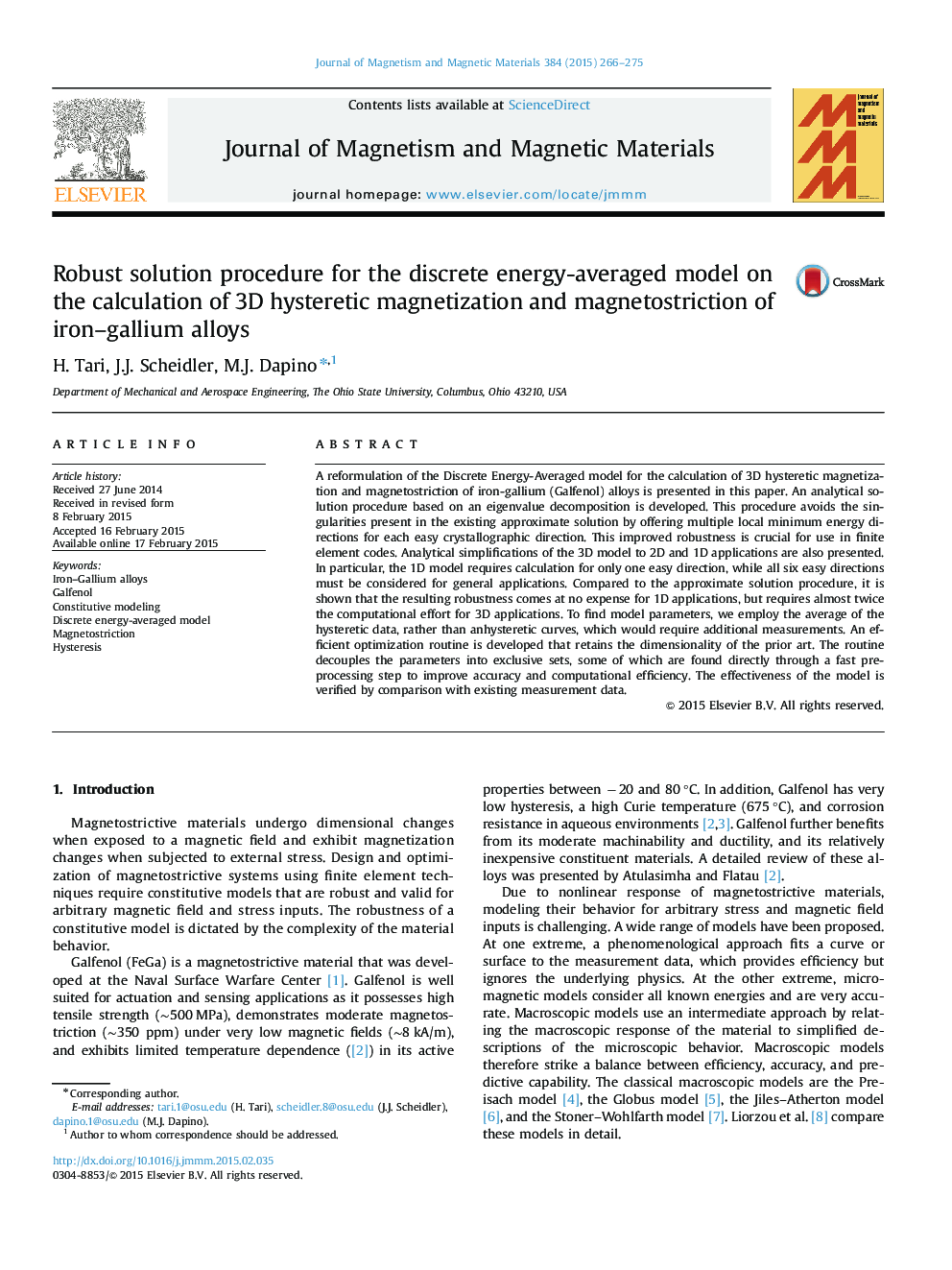| Article ID | Journal | Published Year | Pages | File Type |
|---|---|---|---|---|
| 1799096 | Journal of Magnetism and Magnetic Materials | 2015 | 10 Pages |
•The discrete energy-averaged model for Galfenol is reformulated.•An analytical solution for 3D magnetostriction and magnetization is developed from eigenvalue decomposition.•Improved robustness is achieved.•An efficient optimization routine is developed to identify parameters from averaged hysteresis curves.•The effectiveness of the model is demonstrated against experimental data.
A reformulation of the Discrete Energy-Averaged model for the calculation of 3D hysteretic magnetization and magnetostriction of iron-gallium (Galfenol) alloys is presented in this paper. An analytical solution procedure based on an eigenvalue decomposition is developed. This procedure avoids the singularities present in the existing approximate solution by offering multiple local minimum energy directions for each easy crystallographic direction. This improved robustness is crucial for use in finite element codes. Analytical simplifications of the 3D model to 2D and 1D applications are also presented. In particular, the 1D model requires calculation for only one easy direction, while all six easy directions must be considered for general applications. Compared to the approximate solution procedure, it is shown that the resulting robustness comes at no expense for 1D applications, but requires almost twice the computational effort for 3D applications. To find model parameters, we employ the average of the hysteretic data, rather than anhysteretic curves, which would require additional measurements. An efficient optimization routine is developed that retains the dimensionality of the prior art. The routine decouples the parameters into exclusive sets, some of which are found directly through a fast preprocessing step to improve accuracy and computational efficiency. The effectiveness of the model is verified by comparison with existing measurement data.
